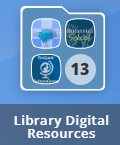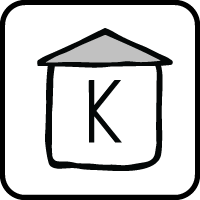- Academics at Plano ISD
- 5th Grade
-
5th Grade Resources for Parents and Families
This page is for students who are currently in fifth grade or have just completed fifth grade.
To view a list of Digital Tools that are available during the summer, click on this Elementary Summer Technology document. These tools can be accessed via your student's Webdesk.
Family Activities
-
- Read 20+ minutes a day.
- While reading or after reading, write/draw:
- An important part of the text.
- A connection that you made to the text.
- A question about the text.
- The problem and resolution of the story (literary text only - fiction, poetry, drama).
- The central idea and details to support it (informational texts only - nonfiction, persuasive).
- A conclusion that can be drawn from the text.
- Something that could be added to the text to extend its message.
- Something you learned from the text.
-
- Environmental Shape or Pattern Hunt - Go on a scavenger hunt around the house (or even through different picture books) and find different objects/pictures for all the different types of quadrilaterals.(parallelogram, square, rectangle, rhombus, trapezoid, kite)
- Building - Have your child build and name all the different quadrilaterals with Legos, toothpicks, crayons, pencils, straws, etc.
- Physical Activities - While doing physical activities (e.g. walking from one end of a room to another, hopping, jumping jacks, going up and down stairs), keep track by skip counting by 2s, 3s, 4s, 5s, 6s, 7s, 8s, 9s,10s, 11s, and 12s. If you have access to an outdoor space, have your child create a hopscotch path. If you’re indoors, create a number path by writing on cardboard boxes or sheets of paper and have students skip count by different amounts.
- Cooking and Food - Have your child help out in the kitchen by measuring out ingredients and determining the amount of ingredients that would be needed if you double, triple, or quadruple the recipe. Have your child identify information from the nutritional facts and solve problems, such as if you had 3 servings of these cookies, how many calories would that be? How many milligrams of sodium are in the entire box of cereal? How do you know? Have students create an addition, subtraction, multiplication, and division problem using the nutritional facts from one of their favorite foods/snacks.
-
INVESTIGATE: Create a question about an organism, object, or event that can be observed in the natural world. It may sound something like:
-
- Does the kind of material used to insulate a refrigerated can of soda affect its temperature change?
- Does the slope of the surface affect the rate of water erosion?
- What role does a decomposer have in a Food Web?
- Plan and conduct a simple investigation to answer your question.
- Be sure to make observations and collect data.
- Record and organize your data using pictures, numbers, and/or words.
- Write about what you learned and new questions that you have.
- Research or test your new questions.
-
-
- Create a map of an area larger than your neighborhood, such as the city of Plano or the state of Texas.
- Look through family albums, photos, and/or artifacts and discuss what students see and know.
- Read about a historical figure and discuss or write about their contributions.
- Read about a current event (newspaper or online) and write about the event. Discuss ways the student would inform the public about the event.
All Things Digital
-
Library Digital Resources

- Access Library Digital Resources folder via tile in Webdesk.
- Find read alouds, encyclopedias, Nat Geo kids, and other research resources.
- Curated list of Summer Resources: K-5 Summer Library Digital Resources
Seesaw

- Access Seesaw Official via tile in Webdesk.
Skills:
- An interactive learning platform across all content areas, including digital citizenship and computer science.
- Students create, reflect, share, and collaborate.
- The platform is also a communication tool between school and home, where connected families can view student work and send messages to the teacher.
- Any text written in Seesaw can easily be translated into 100+ languages by both teachers and families.
Keyboarding Without Tears

- Access via tile in Webdesk.
Skills:
-
HMH Ed Online
- Access PISD HMH ED via tile in Webdesk.
- Access text in:
- Mybook
- Student choice library
- Current events
Review Skills:
- Listen to and/or read and understand texts in a variety of genres, including literary (fiction), informational (non-fiction), poetry, drama, and persuasive/argumentative texts.
-
Dreambox

- Access Dreambox via tile in Webdesk.
- Suggestion: complete 5 lessons a week.
Review Skills:
- Solve one and two-step addition and subtraction problems involving whole numbers, decimals, fractions, and mixed numbers.
- Solve multiplication and division of decimals to the hundredths place (division must be with a whole number divisor).
- Simplify numerical expressions that do not involve exponents.
- Graph ordered pairs of numbers in the first quadrant of the coordinate plane.
-
Discovery Education

- Access PISD Discover Education via tile in Webdesk.
- Students can listen to texts/read along with texts/watch videos in their Student Techbook.
Review Skills:
- Classify matter based on measurable, testable, and observable physical properties.
- Explore the uses of energy, including mechanical, light, thermal, electrical, and sound energy.
- Demonstrate that the flow of electricity in closed circuits can produce light, heat, or sound.
- Demonstrate that light travels in a straight line until it strikes an object and is reflected or travels through one medium to another and is refracted).
-
Savvas Realize

- Access PISD Savvas via tile in Webdesk.
- Access resource:
- Click link under Classes > Social Studies dropdown or
- Go to “Learning systems” and click on Pearson Realize. Select MyWorld Social Studies from options on the right under "My Programs".
- Students can access the eText and read, read along with audio, and watch videos.
- If students have assigned content, please work through those assignments first.
Review Skills:
- Identify characteristics of good citizenship and identify figures who exhibit good citizenship.
- Describe the order of events and use vocabulary related to chronology, including past, present, and future.
- Interpret information on maps and the globe, including landforms and bodies of water.
- Identify the functions of governments and governmental services.
- Identify ways to actively practice good citizenship.


